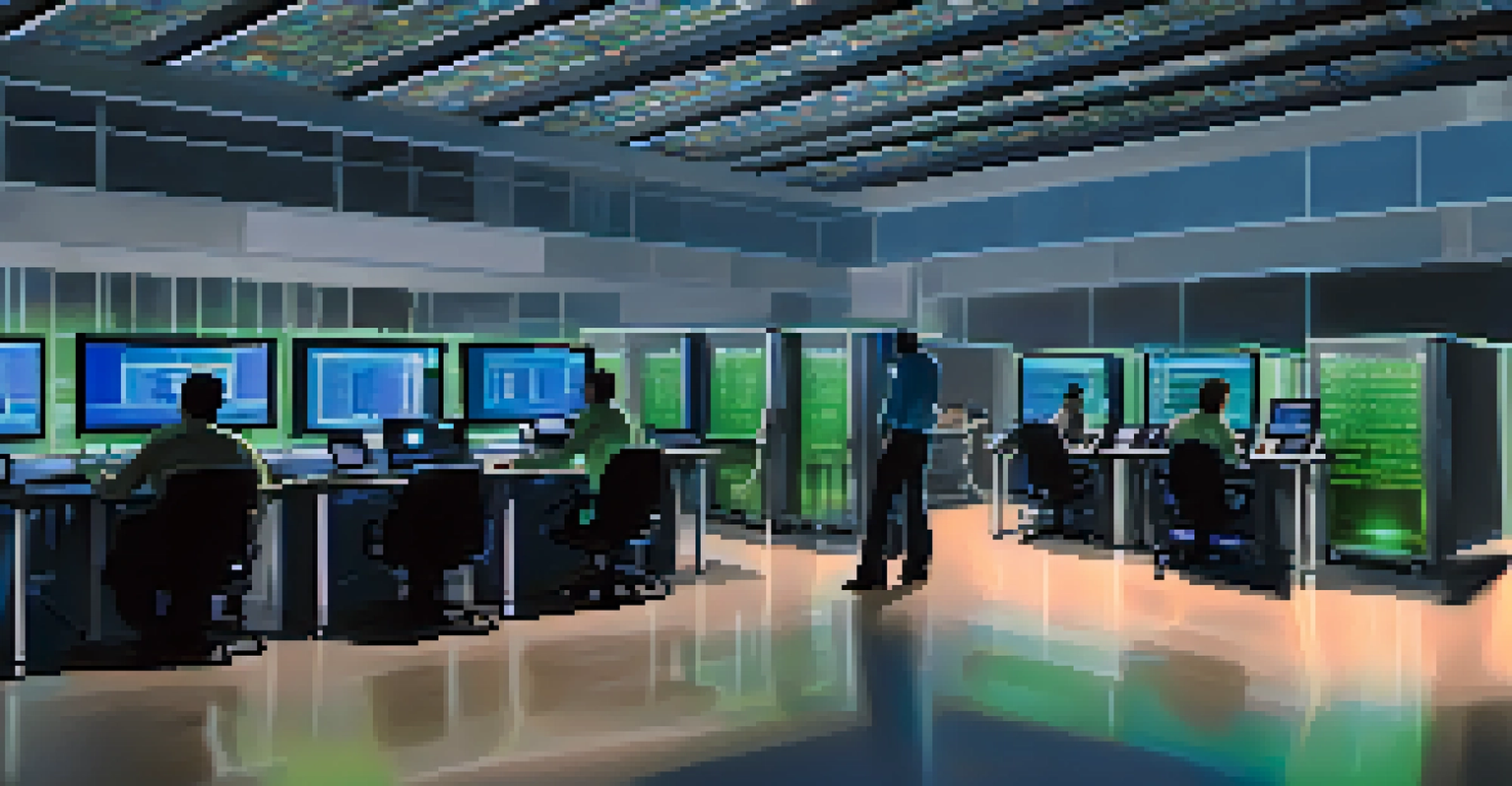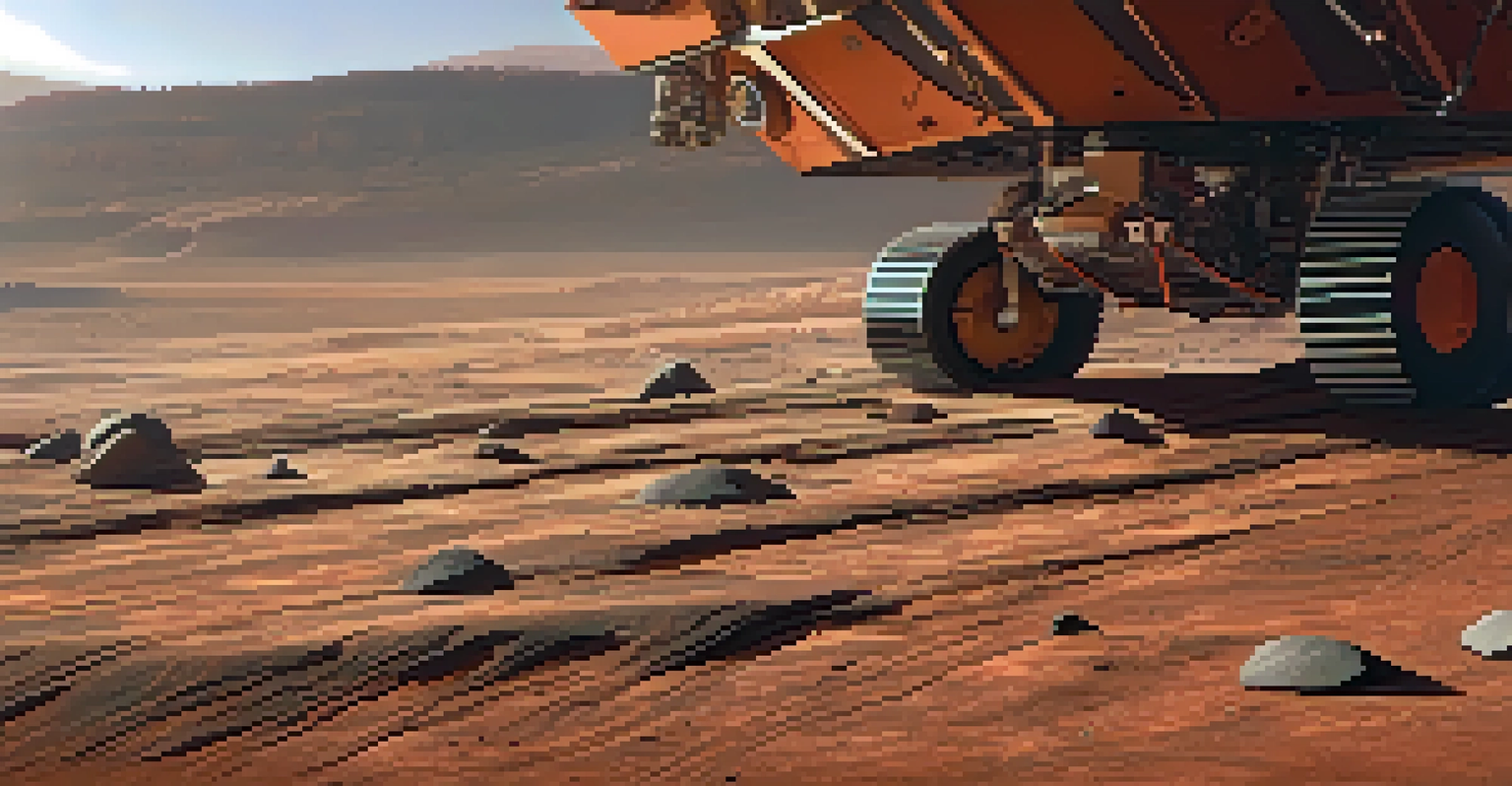NASA Ames Research Center's Contributions to Space Exploration

An Overview of NASA Ames Research Center's Mission
NASA Ames Research Center, located in California's Silicon Valley, plays a vital role in advancing space exploration. Founded in 1939, its mission has evolved to include aeronautics, space science, and planetary science research. The center’s diverse portfolio includes developing innovative technologies and conducting groundbreaking experiments that push the boundaries of our understanding of the universe.
Research is what I'm doing when I don't know what I'm doing.
One of the unique aspects of Ames is its collaborative spirit, often partnering with universities, private companies, and international agencies. This synergy allows for a rich exchange of ideas and resources, enhancing the quality and impact of their research. As a hub for innovation, Ames continues to attract some of the brightest minds in science and engineering.
Ultimately, the center's mission reflects a commitment to expand our knowledge of space and improve life on Earth, which resonates with the broader goals of NASA. By fostering a culture of creativity and exploration, Ames has laid the groundwork for numerous discoveries that shape our future in space.
Key Innovations in Aeronautics and Space Technology
NASA Ames has been at the forefront of numerous technological advancements, particularly in aeronautics. For instance, it played a significant role in the development of the Space Shuttle program, especially in designing and testing thermal protection systems. These innovations were crucial for ensuring safe re-entry into Earth's atmosphere, a vital aspect of human spaceflight.

In addition to the Space Shuttle, Ames has developed cutting-edge technologies for spacecraft design, including advanced computational fluid dynamics. This technology simulates how air flows around objects, helping engineers refine designs before building prototypes. Such innovations have not only enhanced safety but also improved the efficiency of space missions.
Innovation in Space and Aeronautics
NASA Ames Research Center is leading advancements in aeronautics and space technology, crucial for safe human spaceflight and efficient missions.
Moreover, Ames is heavily involved in the development of autonomous systems for space exploration. These systems allow spacecraft to operate with minimal human intervention, which is particularly important for long-duration missions to distant planets. This pioneering work is crucial for future missions to Mars and beyond, ensuring we can explore the cosmos safely and effectively.
Contributions to Planetary Science and Exploration
Ames Research Center has made significant strides in planetary science, particularly in understanding the composition and behavior of celestial bodies. Its research has contributed to missions like the Mars Exploration Rover, which has provided invaluable data about the Martian surface. By analyzing soil samples and atmospheric conditions, Ames scientists have helped uncover the mysteries of our neighboring planet.
The important achievement of Apollo was demonstrating that humanity is not forever chained to this planet and our visions go rather further than that and our opportunities are unlimited.
The center's expertise also extends to astrobiology, the study of life in the universe. Ames researchers investigate the potential for life on other planets by exploring extreme environments on Earth. These studies offer insights into how life could exist in harsh conditions, which is essential for guiding future exploration efforts on planets like Europa and Enceladus.
In addition to Mars, Ames has played a role in missions to study comets and asteroids. By analyzing these celestial objects, scientists can gain a better understanding of the early solar system and the formation of planets. This knowledge not only enriches our understanding of space but also informs us about potential threats to Earth, such as asteroid impacts.
The Role of Supercomputing in Space Research
Computational power is crucial for modern space exploration, and NASA Ames Research Center is home to some of the most advanced supercomputers in the world. The NASA Advanced Supercomputing (NAS) facility enables researchers to run complex simulations and analyze vast amounts of data, accelerating the pace of discovery. This capability is particularly important when modeling the dynamics of space environments or simulating spacecraft maneuvers.
One notable project involves using supercomputers to simulate the effects of climate change on Earth and its atmosphere. By running these simulations, Ames scientists can predict future climate scenarios and their potential impacts on our planet. This research not only aids in understanding Earth’s climate but also informs strategies for future space missions where environmental factors are crucial.
Significant Planetary Science Contributions
Ames plays a key role in planetary science by contributing to missions that explore Mars and astrobiology, enhancing our understanding of life beyond Earth.
Furthermore, supercomputing enhances the analysis of data collected from space missions. For instance, processing images from space telescopes or analyzing samples returned from planetary missions requires immense computational resources. Ames’ supercomputing capabilities ensure that scientists can extract meaningful insights from this data, driving forward our knowledge of the universe.
Ames Research Center's Contributions to Earth Science
While NASA is known primarily for its space missions, Ames Research Center also makes significant contributions to Earth science. The center conducts research on climate change, natural disasters, and environmental phenomena. By utilizing satellite data and advanced modeling techniques, Ames scientists can monitor changes in the Earth's atmosphere and surface, providing crucial information for policy-making and disaster response.
One of the center's projects focuses on developing tools to predict and analyze wildfires, which have become increasingly prevalent due to climate change. By studying atmospheric conditions and vegetation, researchers can create models that forecast wildfire behavior, helping communities prepare and respond effectively. This work underscores Ames’ commitment to not only exploring space but also improving life on Earth.
Additionally, Ames collaborates with other NASA centers and agencies to study global climate patterns and their impact on ecosystems. These interdisciplinary efforts enhance our understanding of how changes in the Earth’s climate affect not just the planet but also human health and security. Through this research, Ames contributes to building a more sustainable future.
Educational Initiatives and Public Outreach
Ames Research Center recognizes the importance of education and public engagement in fostering the next generation of scientists and engineers. The center hosts numerous educational programs, workshops, and internships aimed at inspiring students of all ages. These initiatives provide hands-on experiences that ignite curiosity about space and science, encouraging young minds to pursue careers in STEM fields.
One particularly impactful program is the Ames Research Center's collaboration with local schools and universities. By partnering with educators, Ames provides resources and expertise to enhance science curricula. This not only benefits students but also helps teachers integrate space science into their classrooms, making learning more engaging and relevant.
Commitment to Earth Science
In addition to space exploration, Ames conducts vital research on climate change and natural disasters, aiming to improve life on Earth.
Moreover, Ames actively participates in public outreach through events like open houses and science festivals. These events allow the public to interact with scientists and engineers, ask questions, and learn about ongoing research. By demystifying space exploration and science, Ames fosters a sense of community and shared excitement about discovering the universe.
Future Directions for NASA Ames Research Center
As we look to the future, NASA Ames Research Center is poised to continue its pivotal role in space exploration. With upcoming missions to Mars and beyond, the center's research will be critical in developing the technologies needed for human exploration. Ames is already working on projects related to deep space habitation and sustainable life support systems, which are essential for long-duration missions.
In addition, Ames is exploring the potential of commercial spaceflight and partnerships with private companies. By collaborating with industry leaders, the center aims to accelerate innovation and reduce costs associated with space missions. This shift toward commercialization represents a new era in space exploration, making it more accessible to a wider audience.

Finally, Ames remains committed to its core mission of advancing science and technology for the benefit of humanity. Whether it's through climate research, planetary exploration, or educational outreach, the center's future endeavors will continue to inspire and inform. As we venture further into the cosmos, NASA Ames will undoubtedly remain a key player in unraveling the mysteries of space.